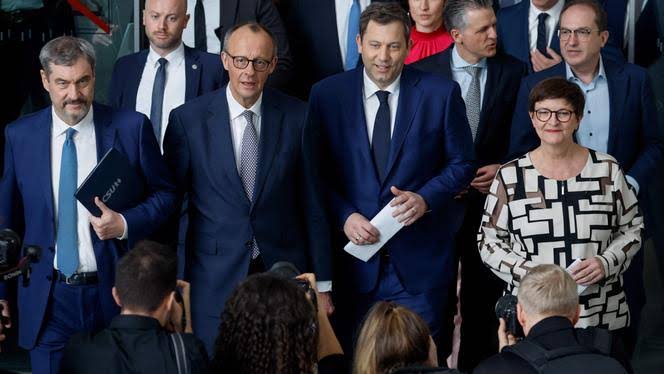
It is said that in post-war Germany, a coalition and government could be established based on a simple verbal agreement among party leaders. However, the arrangement revealed on Wednesday, April 9, by the Christian Democrats (CDU-CSU) and the Social Democrats (SPD) to lead the country following the elections on February 23 does not fit this description. This meticulously crafted 146-page document, which harmonizes the priorities and demands of both parties, was negotiated in secrecy over the course of a month by 192 representatives, all while facing pressure from party members and the wave of tariffs announced by the White House. “We needed to deliver results swiftly,” stated Friedrich Merz, the likely future conservative chancellor, on Wednesday, echoing his well-known phrase: “Germany is back.”
See more: Tariffs: Amid unpredictable US policies, Europe hopes to win back investor favor
Merz, appearing happy and visibly relieved, was joined by SPD leaders Lars Klingbeil and Saskia Esken, as well as Markus Söder, the president of the Bavarian conservative party CSU. He quickly aimed to address any potential criticism. “You will discover little of what you anticipated in this document, and much of what you did not foresee,” Merz remarked cryptically.



